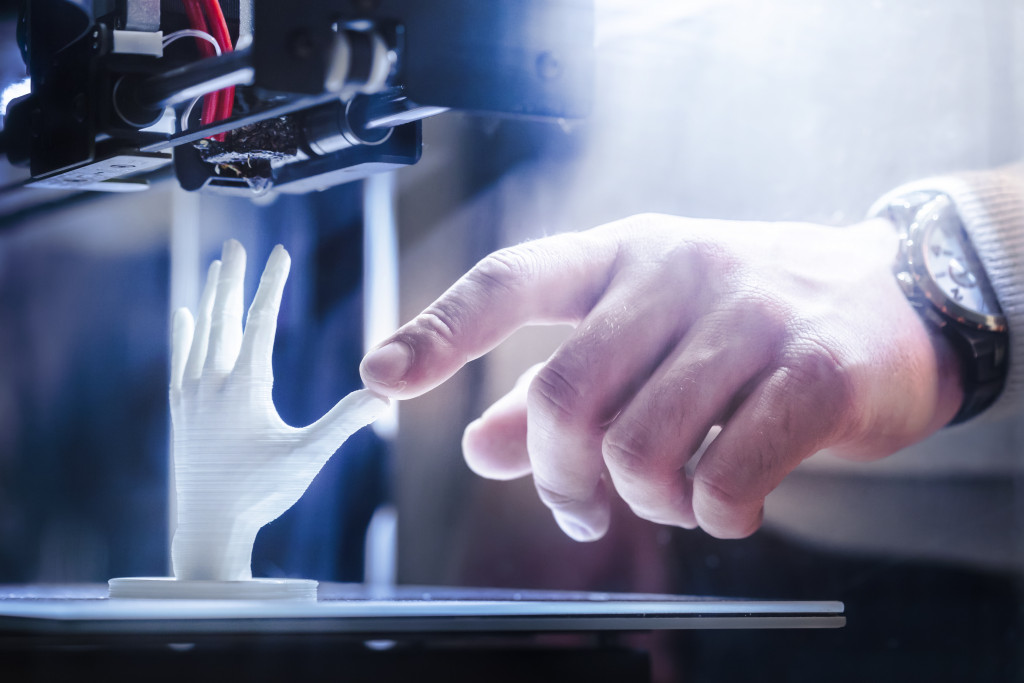Healthcare is evolving not only in its level and quality of service but also in its adoption of tech to improve efficiency, productivity, and patient care. One of the most exciting technologies is additive manufacturing or 3D printing.
What Is 3D Printing?
3D printing is the process of creating physical objects from digital files using layering and building of a material in different shapes. The objects are usually made using additive processes, where an object is built by laying down successive layers of material.
3D printing has become more accessible to the public in recent years, due in large part to the expiration of many key patents and a corresponding decrease in price. Some printers can now be purchased for a few hundred dollars or even less from some online retailers.
This accessibility allows 3D printing to be more useful in various industries. However, much of the attention has been its benefit to hobbyists and small business owners looking for ways to create prototypes or items that may have been previously manufactured overseas for greater financial savings.
It is only recently that 3D printing has attracted attention from the medical community due to its potential use in various surgical applications. In fact, some doctors have now accepted this technology as a viable option, and they believe it offers advantages over other methods of surgical production.
What Are Some Medical Applications of 3D Printers?

One of the most exciting uses for these printers is in the production of prosthetic limbs. Instead of relying on traditional limb replacements, doctors utilize this technology to create customized devices that closely resemble the patient’s original legs.
The prosthetic leg, or any other body part, can be created using 3D printing technology in a process known as stereolithography. This is the same basic process that has been used for decades to develop prototype models of cars and airplanes. Once an original model is created on the computer, it is sent through the printer, where successive layers of a light-sensitive liquid polymer are formed until the final product is made.
Some doctors and dental appliance manufacturing companies like Herbst Orthodontics have begun to utilize this technology as a method for creating bone implants and dental work such as crowns and bridges. Since these items are being created using the patient’s own tissue, they can be fabricated in a shorter amount than the traditional procedure would take.
What Are Some Advantages of Using 3D Printing Technology?
One of the primary advantages of using this technology is the reduced amount of time that it takes to create these items, generally by several weeks or more. This enables doctors to provide patients with implants earlier than they would have been able to if they were manufactured through traditional methods.
Another significant advantage of 3D printing technology is that the fabrications are customized to the exact specifications of the patient. Since these items will be a permanent part of a person, it is imperative that they fit correctly and look as close to natural as possible. This helps to eliminate infection or rejection from occurring after surgery.
Unlike traditional methods of manufacturing that utilize molds and other tools, 3D printers make use of a digital method to create solid objects from computer models. This has many advantages over the older, analog type of manufacturing in various situations, such as cases where it is necessary to make items in a shape or size that would be difficult to produce using traditional methods.
For example, this technology has been used to create various types of cutting guides for surgeons in the medical field, which help them make more precise cuts during surgery. Advanced imaging techniques can produce computer models that the printer can use to create the necessary tools for surgery.
Are There Limitations to 3D Printing in Healthcare?
Since this technology is still relatively new, some limitations have prevented it from being used in every area of healthcare. For example, these printers are best suited for producing items that do not vary significantly in size or dimension. If the item changes size significantly during use, it may be necessary to create several sections or models that can be combined after printing.
Despite the limitations, there is no disputing that this technology holds a great deal of potential in the field of medicine and dentistry. As research continues into its capabilities, it is likely that we will see many more developments that allow doctors to provide patients with improved care in a shorter amount of time.

















